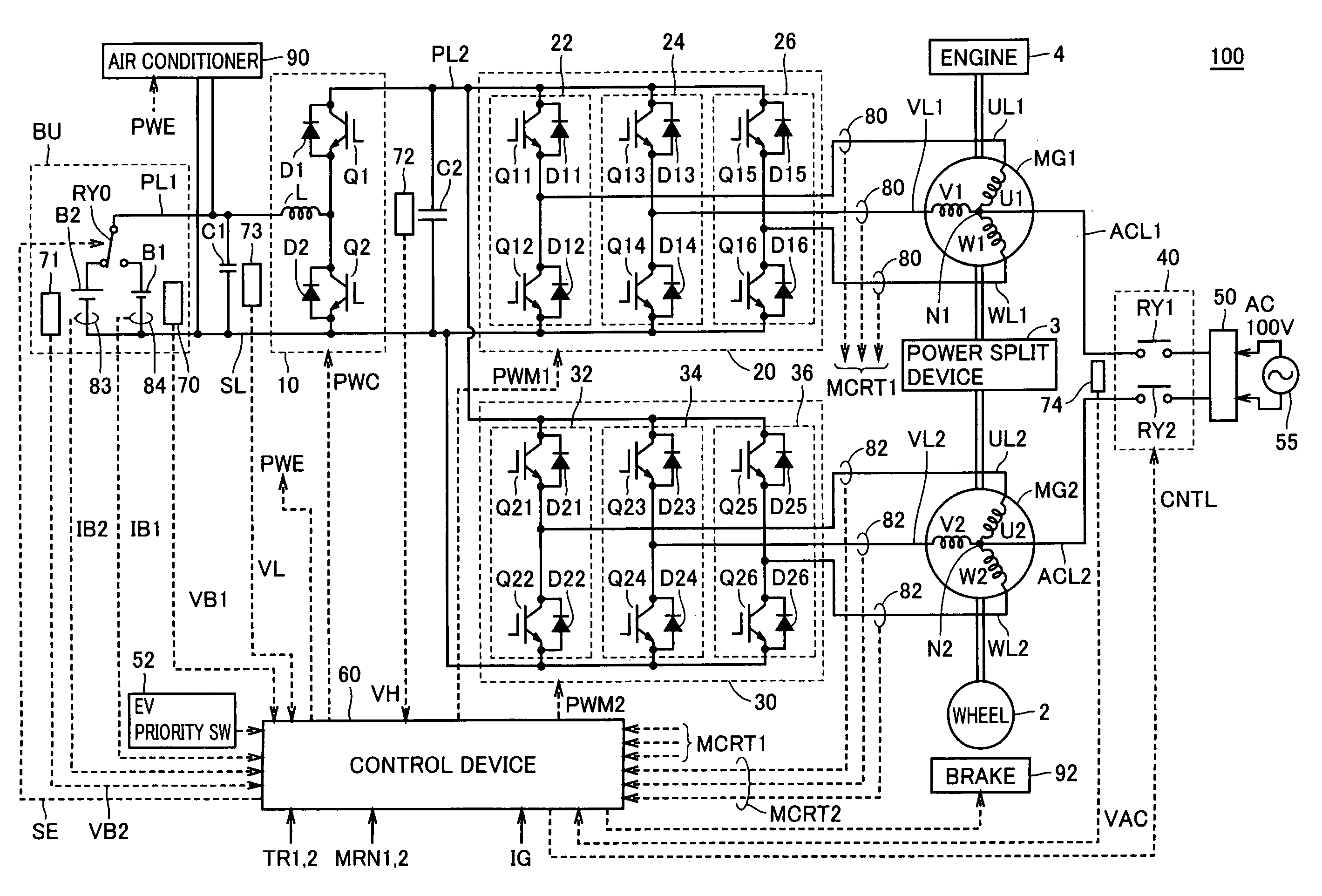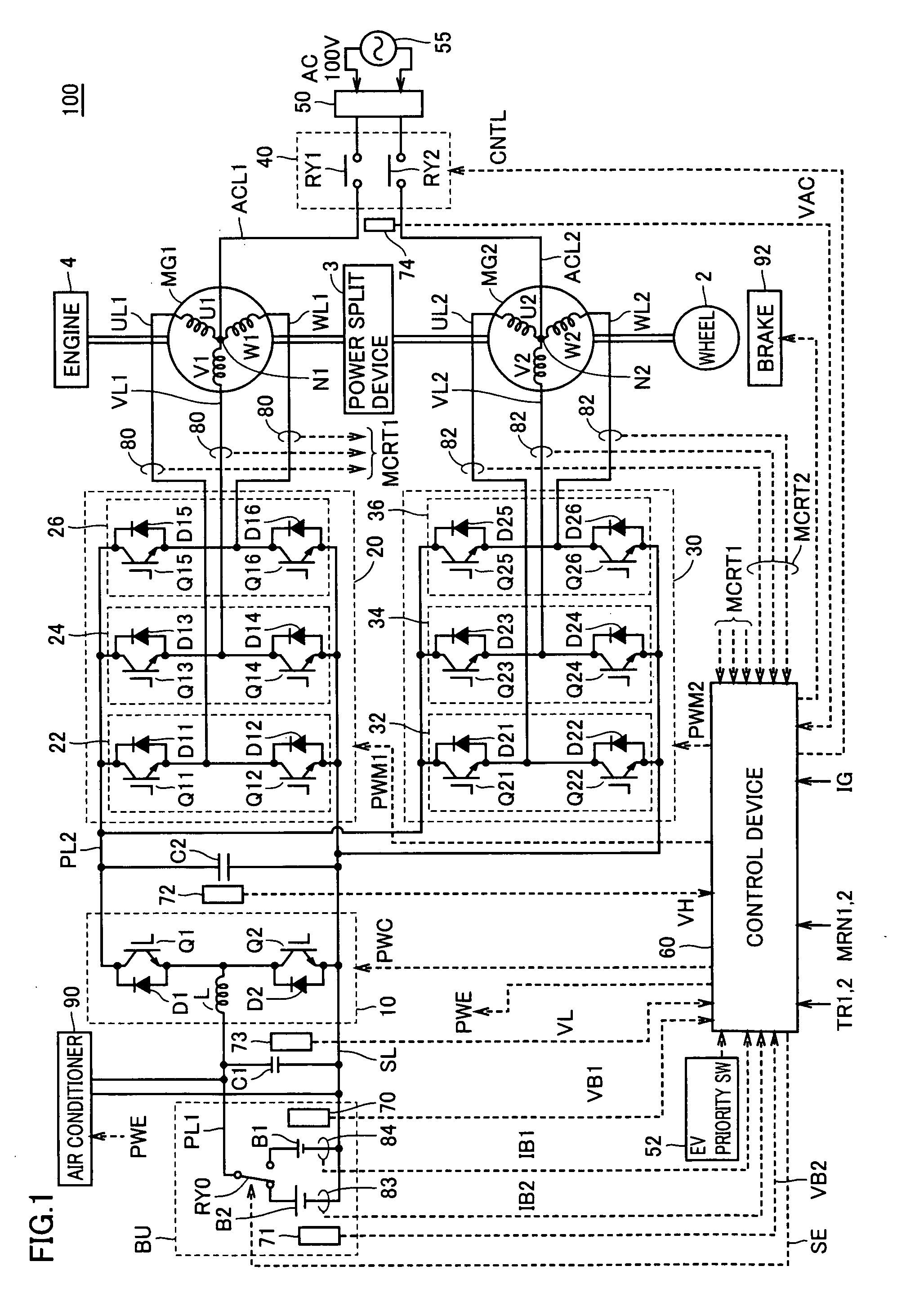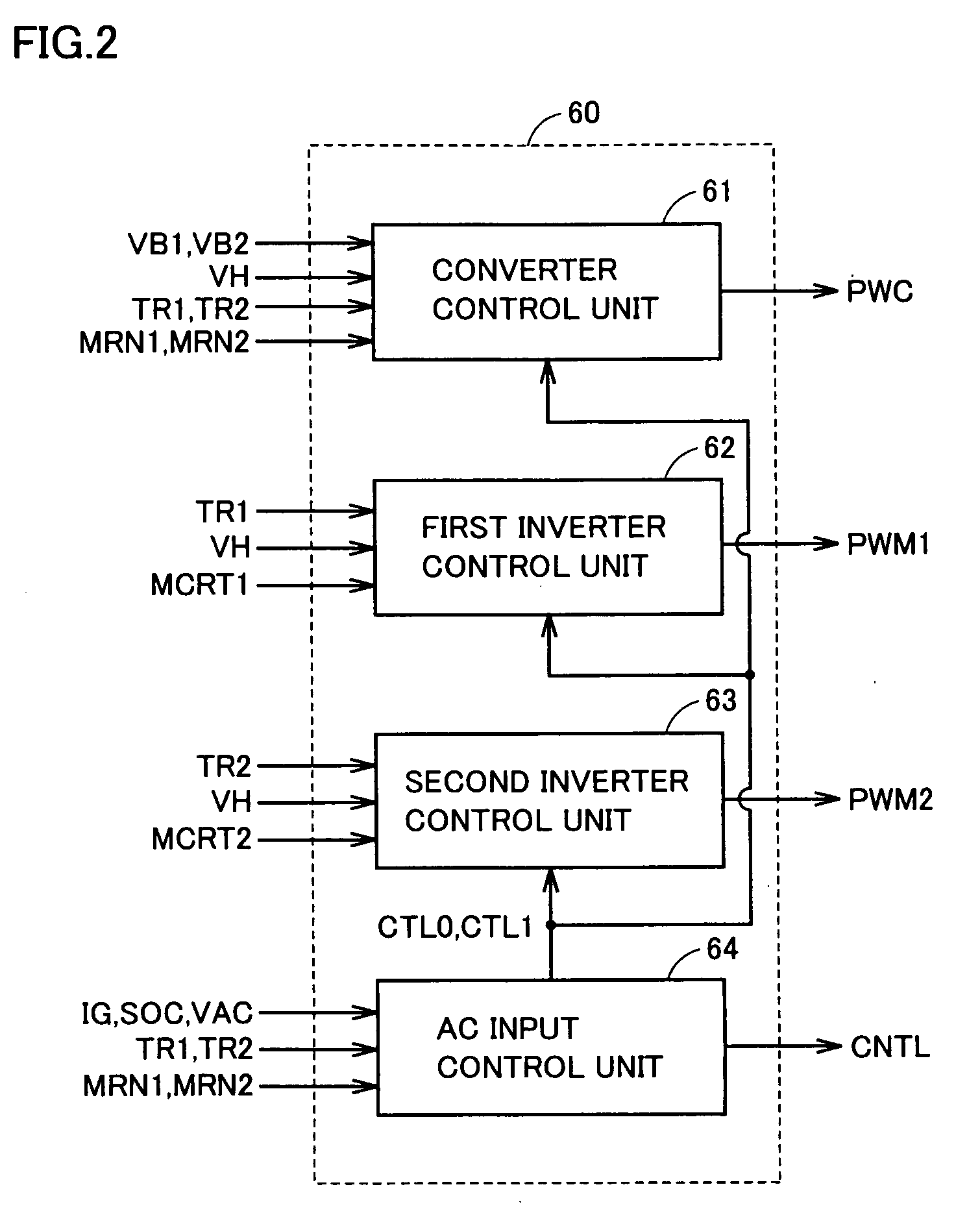Power Supply Device for Vehicle and Method of Controlling the Same
a technology for power supply devices and vehicles, applied in the direction of electric devices, propulsion parts, engine-driven generators, etc., can solve the problems of increasing the weight of the vehicle, the charging device is provided in a fixed manner, and the battery cannot be charged at a different place, so as to increase the distance or time the vehicle can travel, reduce the frequency of refueling, and increase the life of the switching portion
- Summary
- Abstract
- Description
- Claims
- Application Information
AI Technical Summary
Benefits of technology
Problems solved by technology
Method used
Image
Examples
first embodiment
[0052]FIG. 1 is a schematic block diagram of a vehicle according to a first embodiment of the present invention.
[0053]With reference to FIG. 1, vehicle 100 includes a battery unit BU, a voltage step up converter 10, inverters 20, 30, power supply lines PL1, PL2, a ground line SL, U-phase lines UL1, UL2, V-phase lines VL1, VL2, W-phase lines WL1, WL2, motor generators MG1, MG2, an engine 4, a power split device 3, a wheel 2, a brake 92, and an air conditioner 90.
[0054]Vehicle 100 is a hybrid vehicle that uses a motor and an engine in combination for driving the wheel.
[0055]Power split device 3 is a mechanism connected to engine 4 and motor generators MG1, MG2 for distributing motive power among them. For example, a planetary gear mechanism having three rotary shafts of a sun gear, a planetary carrier, and a ring gear may be used for the power split device. The three rotary shafts are connected to rotary shafts of engine 4, motor generators MG1, MG2, respectively. For example, engine ...
second embodiment
[0167]FIG. 13 is a flowchart showing a structure of a process relating to battery switching executed in a second embodiment. The flowchart in FIG. 13 also shows a process executed instead of step S15 in FIG. 9, namely, step S15A.
[0168]Reference is made to FIG. 13. Initially, when the process is initiated, electric power consumed in air conditioner 90 in FIG. 1 is increased to be equal to regenerative electric power generated in motor generator MG2, so that battery power Pb, which is input to and output from battery unit BU, is resultantly made to be 0 in step S21A. Specifically, electric power of the air conditioner may be adjusted such that a current value IB1 sensed by current sensor 84 is made to be 0.
[0169]Successively, the processes in step S22-S24 are executed. Note that the processes in step S22-S24 are the same as those described in FIG. 11, and hence the description thereof will not be repeated.
[0170]When the process in step S24 is completed, electric power consumed in air ...
third embodiment
[0172]In a third embodiment, regenerative braking by motor generator MG2 is temporarily stopped. Therefore, a process in step S15B is performed instead of the process in step S15 in FIG. 9.
[0173]FIG. 14 is a flowchart showing a structure of a process relating to battery switching executed in a third embodiment.
[0174]With reference to FIG. 14, initially in the process in step S15B, regenerative braking by motor generator MG2 is initially stopped, and instead of this, regenerative braking is switched to brake 92 that frictionally brakes wheel 2, so that control is provided to prevent excessive acceleration in a downslope, in step S21B.
[0175]The following processes in steps S22-S24 are the same as those described in FIG. 11, and hence the description thereof will not be repeated.
[0176]In step S25B, braking force of brake 92 caused by friction is reduced, regenerative braking by motor generator MG2 is resumed, and regenerative electric power generated by the regenerative braking is reca...
PUM
 Login to View More
Login to View More Abstract
Description
Claims
Application Information
 Login to View More
Login to View More - R&D
- Intellectual Property
- Life Sciences
- Materials
- Tech Scout
- Unparalleled Data Quality
- Higher Quality Content
- 60% Fewer Hallucinations
Browse by: Latest US Patents, China's latest patents, Technical Efficacy Thesaurus, Application Domain, Technology Topic, Popular Technical Reports.
© 2025 PatSnap. All rights reserved.Legal|Privacy policy|Modern Slavery Act Transparency Statement|Sitemap|About US| Contact US: help@patsnap.com



